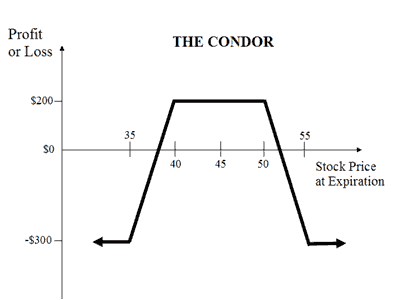Contents:


10 Best Demat Accounts in India for Beginners in Creation of Demat accounts revolutionised the way trades were conducted at the stock exchanges. Credit Card Reward points are types of incentives that customers receive when they use a credit car... We are a diverse group of writers, editors and Subject Matter Experts striving to bring the most accurate, authentic and trustworthy finance and finance-related information to our readers.
March 2023, Design Speculations: Higher Education's Weakening ... - Core77.com
March 2023, Design Speculations: Higher Education's Weakening ....
Posted: Thu, 13 Apr 2023 16:37:19 GMT [source]
Please consider carefully the investment objectives, risks, transaction costs, and other expenses related to an investment prior to deciding to invest. Diversification and asset allocation do not ensure profit or guarantee against loss. Investment decisions should be based on an individual’s own goals, time horizon, and tolerance for risk. Say your loan accrues $1 in interest daily and 31 days pass before making a payment, you’ll owe $31 in accumulated interest. If your monthly payment is $100, then $31 will go toward the accrued interest, and $69 will go toward paying down the principal. The maturity date is the date on which a note becomes due and must be paid.
Let's assume that on December 16, a company borrows $20,000 from its bank at an annual interest rate of 6%. Both the company and the bank have accounting years which end on December 31. Accounts Payable On The Balance Sheet.Accounts payable is the amount due by a business to its suppliers or vendors for the purchase of products or services.
Accrued Interest In Accounting Explained
During the loan period, ABC will owe the bank $54.79 every day in a 365-day year. The accrual accounting concept requires that transactions should be recognized when they occur even if the payment has not been made. It ensures that the accumulated accrued interest is recognized and recorded in the right period when it occurs rather than when it is paid. It is contrary to the cash accounting concept, which requires that revenue and expense transactions be recorded when cash changes hands.

It is categorized as current liabilities on the balance sheet and must be satisfied within an accounting period. The adjusting entry for accrued interest consists of an interest income and a receivable account from the lender’s side, or an interest expense and a payable account from the borrower’s side. On the next coupon payment date , you will receive $25 in interest. The amount of accrued interest for the party who is receiving payment is a credit to the interest revenue account and a debit to the interest receivable account. The receivable is consequently rolled onto the balance sheet and classified as a short-term asset.
Is Accrued Investment Income a Current Asset?
When a person borrows money from a bank, a credit union, or an individual, they are required to pay some interest on the loan extended to them. Interest can also be an income, where an individual earns interest income on money deposited in an interest-bearing account. Accrued interest is an accounting term that refers to the amount of interest that has been incurred as of a specific date but has not yet been paid. Accrued interest can be two-sided, i.e., it can be in the form of accrued interest expense owed by the borrower or accrued interest income on customer deposits that are owed by the bank.
Reporting Interest Income on the 2022 Federal Income Tax Return - My Federal Retirement
Reporting Interest Income on the 2022 Federal Income Tax Return.
Posted: Tue, 14 Feb 2023 08:00:00 GMT [source]
Accrued interest is recorded in the profit and loss account as interest income or expense, depending on the context. When a company earns interest on its investments, loans, or other financial assets, this interest income is recognised in the profit and loss account. This interest income is recorded as revenue in the profit and loss account and contributes to the company’s net income. Let’s say that on January 1st, a company purchases a bond with a face value of $10,000 and a coupon rate of 6%. The bond has a maturity date of December 31st and pays interest semi-annually on June 30th and December 31st.
Example: Using the Simplified Bond Pricing Formula
Our ability to predict future events, actions, plans or stwhat is bookkeepinggies is inherently uncertain and actual outcomes could differ materially from those set forth or anticipated in our forward-looking statements. You are cautioned not to place undue reliance on any of these forward-looking statements. In case you’re involved with an investment, it’s recommended to consult with a financial advisor or accountant to evaluate the impact of accrued interest. Accrued interest refers to interest that has accumulated and remains unpaid. Compound interest refers to the interest that accumulates over time on both the principal and previously earned interest. Accrued interest is the amount of interest accumulated on a loan or debt security but not yet paid.
Then, find out how to set up the journal entry for borrowers and lenders and see examples for both. But rather than requiring daily payments for that interest, lenders keep a running tally of it that you pay in more reasonable increments. This line is especially important to pay attention to if your loan is in forbearance, or if you’re on an income-driven payment plan, because in some cases that interest could be tacked onto your loan. On the other hand, if you’re thinking about buying or selling an investment, you may need to calculate the amount of accrued interest to make sure the transaction is fair.
When it comes to safety in fixed income, municipal bonds have long proven their mettle as a... Accrued interest grows over time, increasing the value of your annuity. You only have to pay taxes on it when you receive an annuity payout. This allows you to defer taxes on your annuity while the interest builds value in the annuity. Our expert reviewers hold advanced degrees and certifications and have years of experience with personal finances, retirement planning and investments. Int is constant and decided before the investment or borrowing, and it cannot be changed.

Accrued interest is recorded in the balance sheet as a current asset or liability, depending on the context. The buyer will have to pay accrued interest to the seller as part of the total purchase price when purchasing bonds in the secondary market. Accrued interest calculations are crucial to understand how much you are owed when you buy bonds and to know how much you'll have to pay on your next credit card statement. The total accrued interest for the 9-month term of the loan is $675, or $10,000 x .09 x 9/12. Thus, the interest revenue recognized in 2019 is $525, and the interest earned for 2020 is $150 (total interest for 9 months of $675 less $525 earned in 2019).
Calculating Bond Accrued Interest Manually
This information can be found within your bond indenture.For example, your bond might pay a 6% coupon rate twice per year. In this case, the annual interest rate would be 6% divided by the number of payments within the year. Thus, a 6% bond that pays interest twice per year would effectively pay 3% of the par value for each of the two payments during the year, or 6% total. Any reference herein to "accrued interest" shall refer to accrued interest which has not become part of the unpaid principal balance. Therefore, if Adrian wants to buy the bond, he needs to pay Leonard $1,000 plus the interest of the three months. Typically, a bondholder who sells a bond has a right over the accrued interest of the bond.
- Annuity providers base income benefits on an annuitant’s life expectancy, which they determine using your age and gender.
- The interest is then added to the principal balance, and interest continues to accrue on the new, higher balance.
- The interest is accrued from the last payment date till the date of preparation of the accounts if it is not paid and the due date is on a later date.
- So in the example above, the $690.41 of accrued interest the seller receives from the new buyer is taxable income to the seller.
- Face value is multiplied by the bond’s stated, or coupon, rate of interest.
https://1investing.in/ probably aware that every loan has some type of interest attached to it, but you may not understand the difference between regular interest and accrued interest. Learning how to define accrued interest can help you determine the best kind of loan to obtain or the best terms when you offer credit to your customers and clients. When bond prices are listed, the convention is to list them as a percentage of par value, regardless of what the face value of the bond is, with 100 being equal to par value. Past price trends are not indicative of future price trends and are not intended to be a proxy for historical or projected future performance of any specific artwork or Masterworks shares.
- Most debt financing arrangements, such as loans, require the borrower to make periodic interest payments to the lender in exchange for capital.
- Accrued Interest represents an unfulfilled interest expense amount still owed by a borrower to a lender as of a particular date.
- The revenue recognition principle states that revenue should be recognized in the period in which it was earned, rather than when payment is received.
- Bonds come with a coupon rate at which interest is paid to the bondholder.
- Int is recorded per the accrual accounting system, i.e., on a due basis, whereas the regular interest is recorded on a receipt basis.
Bonds accrue interest every day, but they pay interest only twice a year. When those payments are received, they become taxable — assuming the bond is a taxable bond. Accrued interest maintains an equitable balance between buyers and sellers. It’s paid to sellers because they earned it during the time they owned the bond. When the new owner receives the next full semiannual interest payment, it will include interest earned prior to the time the new owner actually owned the bond.
That way, you can stay organized and better manage your accounting books. You can use accrued interest calculators to see how much accrued interest might add up on your student loan while you’re taking a break, and how much interest-only payments can help you in the long run. When it comes to loans, accrued interest is the amount of unpaid interest that has built up since you last made a payment. In the context of student loans, for example, interest may begin accruing at the moment your loan is disbursed and continue to accrue until you pay it off. Get instant access to video lessons taught by experienced investment bankers. Learn financial statement modeling, DCF, M&A, LBO, Comps and Excel shortcuts.
Accrual accounting differs from cash accounting, which recognizes an event when cash or other forms of consideration trade hands. Accrued interest is reported on the income statement as a revenue or expense, depending on whether the company is lending or borrowing. In addition, the portion of revenue or expense yet to be paid or collected is reported on the balance sheet as an asset or liability. Because accrued interest is expected to be received or paid within one year, it is often classified as a current asset or current liability. Taking the same scenario as an example, the accounting treatment would the exact opposite if the company was the lender. The accrual accounting principle recognizes transactions when they occur, while the cash accounting method only recognizes transactions when cash changes hands.

